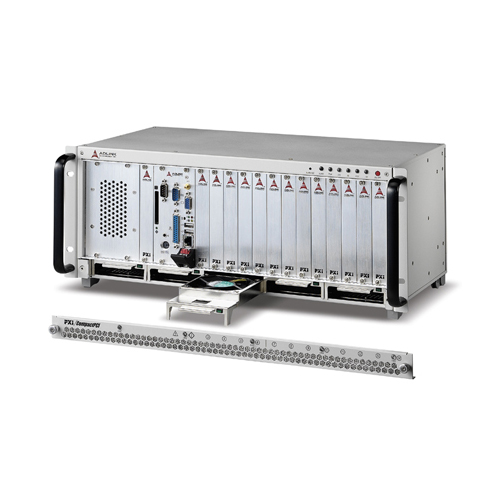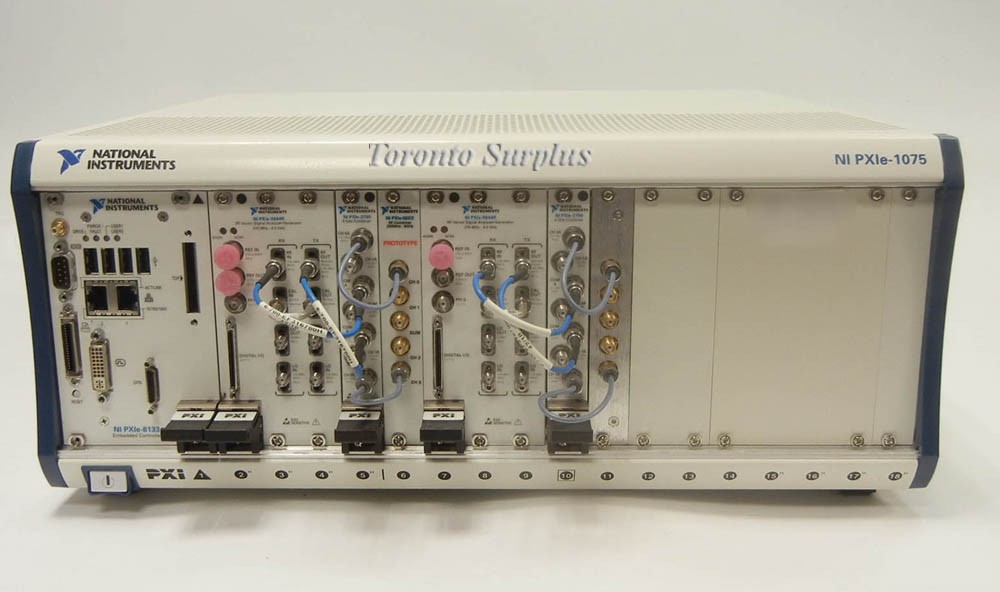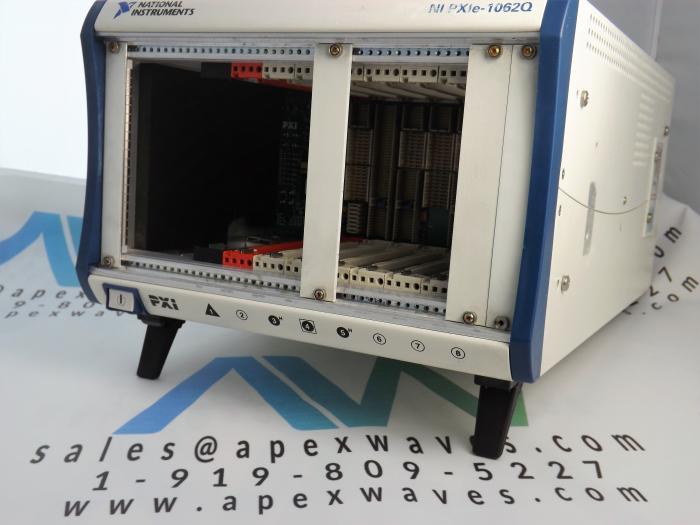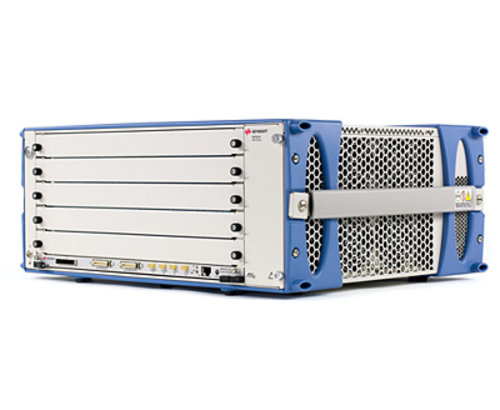Pxi Chassis Slots
How do I use MAX with my PXI chassis?
To configure your PXI system, you must identify each PXI chassis. (PXI Express chassis are automatically identified.) Identifying your chassis enables features such as slot identification, geographic addressing, and trigger routing. MAX automatically detects all PXI chassis connected by National Instruments MXI bridging kits, but cannot detect the PXI chassis model.
For third-party bridging solutions, you must show PXI buses at the PXI system level to see the bus that represents the chassis. Then you must create a chassis for that bus. Refer to PXI System Basics and PXI Bus Basics for more information.

What can I do at the PXI chassis level?
Occupying just one PXI or LXI chassis slot, the programmability of the model 41-670 module developed by Pickering Interfaces minimises the amount of hardware required. Also, since it sits in a PXI chassis alongside a customer’s other instruments, additional control protocols/interfaces are not necessary, simplifying test setup and operation. Peripheral Slots The PXI-62508 comes with seven peripheral slots including the star trigger slot. Each peripheral slot supports a 3U PXI/ CompactPCI peripheral module. Figure 2-7: PXI Bus Signal Routing Local Bus The PXI backplane local bus is a daisy-chained bus that connects each peripheral slot with its adjacent (left/right) peripheral slots.
You can identify your PXI chassis type, view and communicate with devices, renumber the chassis, delete the chassis, and reserve triggers in the chassis.
What do you want to do?
Right-click your PXI chassis and select your chassis model in the Identify As» menu. If your chassis model is not listed, select Other... and choose the file that describes your PXI chassis.
Select your PXI Chassis. After you have identified your PXI chassis, the Slot view displays information about each slot in your PXI chassis. To communicate with a PXI device, right-click the PXI device and select Open VISA Session. You should see an interactive session to communicate with your device.
Right-click your PXI chassis and select Renumber.... Enter or select a new chassis number for your PXI chassis. Chassis numbers must be unique in the PXI system.

You cannot delete a chassis unless you manually created it by identifying a hidden PXI bus as a chassis, or you had previously identified the chassis and then removed the physical connection to it. To delete your PXI chassis, select the PXI chassis and press <Delete>, or right-click the PXI chassis and select Remove Chassis.
Pxi Chassis Slots Youtube
Once you identify your PXI chassis, MAX displays the Triggers pane, where you can configure which trigger lines in the chassis should be reserved. Devices with older drivers and third-party devices may require this reservation to prevent modern drivers, like NI-DAQmx, from automatically routing signals on trigger lines used by those devices. For more information about why trigger reservation may be necessary, see What Is Trigger Reservation, and Why Is It Necessary?
Note that in some chassis with multiple trigger buses, such as the NI PXI-1045, reserving a trigger line in one bus does not reserve any lines in the other buses, and signals are not propagated between trigger buses. To propagate signals between buses, National Instruments chassis with multiple trigger buses support routing trigger signals. Without routing, triggers generated in one trigger bus will not be received in any other trigger bus. You can configure trigger routing in the Triggers pane of the chassis, or routes may be configured on unused trigger lines as needed by newer drivers like NI-DAQmx.
To reserve triggers in your PXI chassis, select your PXI chassis. In the Triggers pane, check the box next to each trigger you want to reserve. Click Save in the toolbar to apply your changes. If the triggers you want to reserve are in use, you must reboot your machine for the changes to take effect.
| Note MAX does not recognize third-party software or older versions of some National Instruments software. If you are using such software, you must manually verify that none of the trigger lines you selected is in use. |
To route triggers in your PXI chassis with multiple trigger buses, select your PXI chassis. In the Triggers pane, if routing is available for the identified chassis, you may select between several possible routes for each trigger line to cause signals to flow from a source bus to the other buses in the chassis. Routing automatically reserves the trigger line in all buses receiving the source signal. If you do not need a trigger line to maintain a specific routing, select the Dynamic route to allow applications and drivers such as NI-DAQmx to configure routes as needed. Click Save in the toolbar to apply your changes. If the destinations of the chosen routes are in use, you must reboot for the changes to take effect.
For more detailed information, see Configuring PXI Triggers and KnowledgeBase 3TJDOND8: Using PXI Timing and Triggering Functionality.
For a PXI/SCXI combination chassis, such as the PXI-1010 or PXI-1011, you must also configure the chassis for use with NI-DAQ. For NI-DAQmx, right-click Devices and Interfaces»NI-DAQmx Devices and choose Create New NI-DAQmx Device»NI-DAQmx SCXI Chassis. After selecting the appropriate chassis, follow the instructions provided. For traditional NI-DAQ, right-click Devices and Interfaces»Traditional NI-DAQ Devices and choose Add SCXI Chassis..., selecting the appropriate chassis.
Pxi Chassis Slots Online
How do I use MAX with my PXI chassis?
To configure your PXI system, you must identify each PXI chassis. (PXI Express chassis are automatically identified.) Identifying your chassis enables features such as slot identification, geographic addressing, and trigger routing. MAX automatically detects all PXI chassis connected by National Instruments MXI bridging kits, but cannot detect the PXI chassis model.
For third-party bridging solutions, you must show PXI buses at the PXI system level to see the bus that represents the chassis. Then you must create a chassis for that bus. Refer to PXI System Basics and PXI Bus Basics for more information.
Pxi Chassis Slot Blocker Kit
What can I do at the PXI chassis level?
You can identify your PXI chassis type, view and communicate with devices, renumber the chassis, delete the chassis, and reserve triggers in the chassis.
What do you want to do?

Right-click your PXI chassis and select your chassis model in the Identify As» menu. If your chassis model is not listed, select Other... and choose the file that describes your PXI chassis.
Select your PXI Chassis. After you have identified your PXI chassis, the Slot view displays information about each slot in your PXI chassis. To communicate with a PXI device, right-click the PXI device and select Open VISA Session. You should see an interactive session to communicate with your device.
Right-click your PXI chassis and select Renumber.... Enter or select a new chassis number for your PXI chassis. Chassis numbers must be unique in the PXI system.
You cannot delete a chassis unless you manually created it by identifying a hidden PXI bus as a chassis, or you had previously identified the chassis and then removed the physical connection to it. To delete your PXI chassis, select the PXI chassis and press <Delete>, or right-click the PXI chassis and select Remove Chassis.
Once you identify your PXI chassis, MAX displays the Triggers pane, where you can configure which trigger lines in the chassis should be reserved. Devices with older drivers and third-party devices may require this reservation to prevent modern drivers, like NI-DAQmx, from automatically routing signals on trigger lines used by those devices. For more information about why trigger reservation may be necessary, see What Is Trigger Reservation, and Why Is It Necessary?
Note that in some chassis with multiple trigger buses, such as the NI PXI-1045, reserving a trigger line in one bus does not reserve any lines in the other buses, and signals are not propagated between trigger buses. To propagate signals between buses, National Instruments chassis with multiple trigger buses support routing trigger signals. Without routing, triggers generated in one trigger bus will not be received in any other trigger bus. You can configure trigger routing in the Triggers pane of the chassis, or routes may be configured on unused trigger lines as needed by newer drivers like NI-DAQmx.
To reserve triggers in your PXI chassis, select your PXI chassis. In the Triggers pane, check the box next to each trigger you want to reserve. Click Save in the toolbar to apply your changes. If the triggers you want to reserve are in use, you must reboot your machine for the changes to take effect.
| Note MAX does not recognize third-party software or older versions of some National Instruments software. If you are using such software, you must manually verify that none of the trigger lines you selected is in use. |
To route triggers in your PXI chassis with multiple trigger buses, select your PXI chassis. In the Triggers pane, if routing is available for the identified chassis, you may select between several possible routes for each trigger line to cause signals to flow from a source bus to the other buses in the chassis. Routing automatically reserves the trigger line in all buses receiving the source signal. If you do not need a trigger line to maintain a specific routing, select the Dynamic route to allow applications and drivers such as NI-DAQmx to configure routes as needed. Click Save in the toolbar to apply your changes. If the destinations of the chosen routes are in use, you must reboot for the changes to take effect.
Pxi Chassis Slots Facebook
For more detailed information, see Configuring PXI Triggers and KnowledgeBase 3TJDOND8: Using PXI Timing and Triggering Functionality.

Pxi Chassis Hybrid Slots
For a PXI/SCXI combination chassis, such as the PXI-1010 or PXI-1011, you must also configure the chassis for use with NI-DAQ. For NI-DAQmx, right-click Devices and Interfaces»NI-DAQmx Devices and choose Create New NI-DAQmx Device»NI-DAQmx SCXI Chassis. After selecting the appropriate chassis, follow the instructions provided. For traditional NI-DAQ, right-click Devices and Interfaces»Traditional NI-DAQ Devices and choose Add SCXI Chassis..., selecting the appropriate chassis.